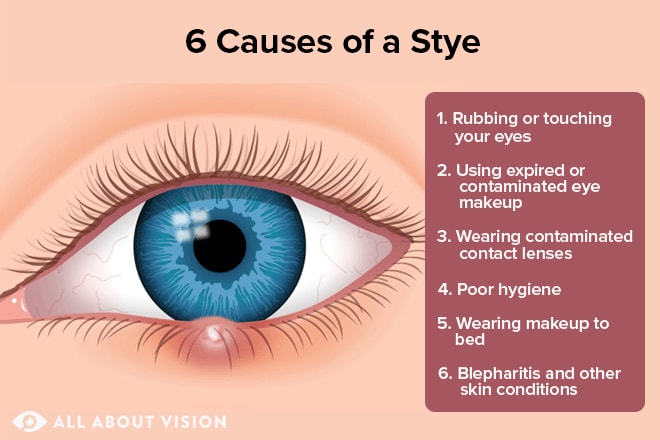Eye stye causes
Bacteria called staphylococcus are commonly found on your skin and in your nose and typically don’t cause any problems. However, when this bacteria, along with dead skin cells, get trapped in an oil gland or hair follicle on the eyelid, it can get infected.
This infected gland or follicle results in a red, swollen, painful bump usually located on the outer lash line. The bump, similar to a pimple, is filled with pus and white blood cells that go to work when an infection is detected.
How long a stye lasts, from the time it first develops to the time the eyelid heals, is around seven to 10 days. Typically, the stye is most swollen and irritated for approximately three days, then naturally opens and drains on its own.
It’s important that you do not try to pop the stye yourself. Not only is this painful, but the pressure can injure the eyelid and create a wound that welcomes more infection.
SEE RELATED: Pink eye vs. Stye

